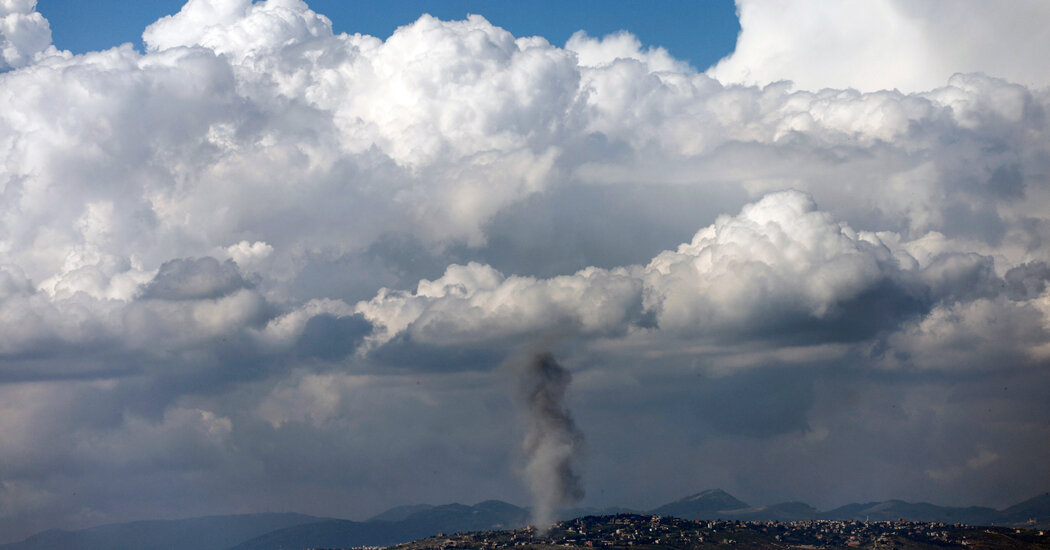
Israel and Hezbollah have exchanged fire along the Lebanese border since the war in Gaza began, with more than 150,000 people on both sides of the border forced to flee their homes. But the intensity of the attacks has increased in recent days, raising fears of full-scale war on another front.
This week, Israeli Prime Minister Benjamin Netanyahu threatened further military action to ensure the return of civilians to communities in northern Israel. Here are some key questions about the conflict and where it might head:
Why are the two sides fighting?
Hezbollah, a powerful Lebanese militia and political movement, launched attacks in Israel on October 8, responding to calls from Hamas to open a second front a day after the Palestinian armed group that rules Gaza launched a deadly attack on Israel. Both Hezbollah and Hamas are supported by Iran.
Hezbollah leader Hassan Nasrallah said his group was trying to block Israeli troops along the border and limit their ability to attack Hamas in Gaza.
Hezbollah's conflict with Israel dates back decades. Israel has invaded Lebanon three times in the past 50 years, most recently in 2006, when the two sides fought a month-long war that killed more than 1,000 people in Lebanon, mostly civilians, and more than 150 in Israel , mostly soldiers. The current round of fighting marks the most serious escalation since then.
In February, Israel launched its deepest strikes into Lebanon in years, striking the Bekaa Valley in response to a surface-to-air missile attack that downed an Israeli drone over southern Lebanon.
In April, Hezbollah launched a drone and missile attack on northern Israel that injured 14 soldiers, one of whom died. Later that month, the group claimed to have launched its largest attack in Israel since October, striking a barracks north of the city of Acre with drones.
In recent weeks, Hezbollah for the first time began targeting Israel's vaunted Iron Dome missile defense system.
This week, a Hezbollah rocket attack caused fires to erupt in northern Israel, prompting Netanyahu on Wednesday to threaten “very intense action” to “restore security in the north.”
What is the outcome of the clashes so far?
Cross-border strikes have caused casualties on both sides. In Lebanon, Hezbollah says more than 300 fighters have been killed, while the United Nations says about 80 civilians have died. In Israel, authorities say 19 security officers and at least eight civilians have been killed.
Some senior Hezbollah and Hamas officials were also assassinated in Lebanon. A senior Hamas official, Saleh al-Arouri, died in an alleged Israeli attack outside Beirut in January. A commander of Hezbollah's elite Radwan force was killed in southern Lebanon the same month.
Israeli authorities have ordered the evacuation of 60,000 civilians from the border areas. On the Lebanese side, over 90,000 people have abandoned their homes.
Netanyahu has repeatedly said he is determined to push Hezbollah back from the border and allow displaced Israelis to return home, a key domestic political issue. Analysts say pressure from his far-right allies could push him to launch a broader attack.
But with thousands of fighters and a vast arsenal of rockets, Hezbollah is capable of striking infrastructure and cities across Israel, and any invasion of Lebanon would likely prove costly for Israeli forces as they continue to fight Hamas in Gaza.
A war would also devastate Lebanon, which is grappling with a political stalemate and the effects of a historic economic collapse. During the 2006 war, Israeli attacks leveled large areas of Beirut and displaced nearly a million people.
Hezbollah's deputy leader, Sheikh Naim Qassem, said this week that the armed group was not seeking to widen the conflict but would wage war if attacked. The Biden administration has been trying since October 7 to prevent a broader regional war and bring the two sides to the table, but Hezbollah says it will not negotiate until the war in Gaza ends.
